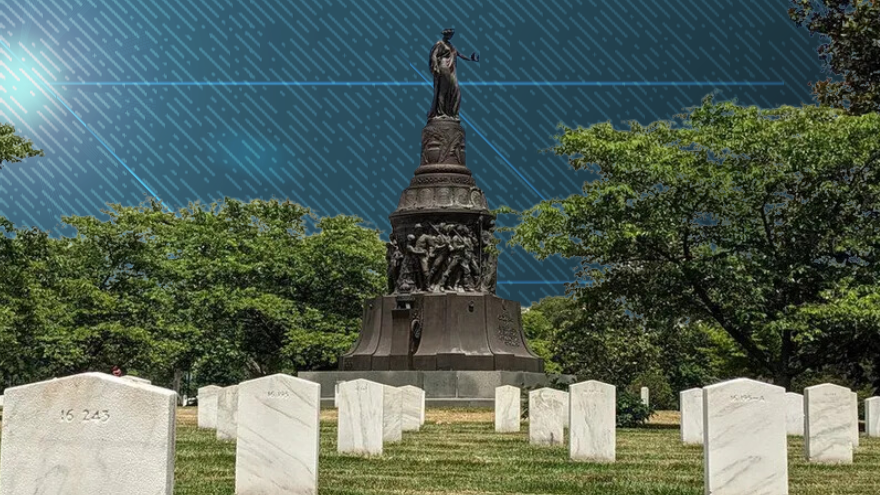A memorial to the American South has been temporarily saved from removal from Arlington National Cemetery.
Arlington National Cemetery announced that the statue would be removed on Dec. 22, just over a year after an independent commission recommended it be taken out due to its connection to the Confederacy.
Judge Rossie Alston of the United States District Court for the Eastern District of Virginia granted an emergency request for a temporary restraining order that prevents the Department of Defense from moving forward with its plan. The complaint was brought by Defend Arlington on Dec. 17. A hearing is currently scheduled for Dec. 20.
The 32-foot, bronze statue – known as the Confederate Memorial Monument or the Reconciliation Monument – was installed in 1914 and depicts a woman crowned with olive leaves, holding a laurel wreath, a plow stock and a pruning hook.
The inscription reads “They have beat their swords into plough-shares and their spears into pruning hooks” – a biblical allusion that refers to lines from the Book of Isaiah, the Book of Joel and the Book of Micah.
Congressman Andrew Clyde of Georgia has led efforts to preserve the monument, which he says the Naming Commission inaccurately labeled a monument to the Confederate States when the monument “honors national unity.”
“The radical Left doesn’t want reconciliation and national unity,” said Clyde in a statement on X Dec. 18. “They want division and destruction.”
On Dec. 11, Clyde and 40 other members of Congress asked Secretary of Defense Lloyd Austin to “suspend all removal activities related to the Reconciliation Monument … until Congress completed the Fiscal Year 2024 appropriation process.” The lawmakers stressed the monument's symbolic meaning and significant historical purpose.
“Beginning with the unveiling of the statue and carrying through modern times, each year, it is the custom for the President to send a wreath to the memorial,” the group wrote in a letter. “This tradition, which demonstrates tremendous national unity and respect, has been carried on regardless of the party or politics of the sitting president. Even President Barack Obama understood the importance of the Reconciliation Monument in the context of what it stands for, unity not division, when he continued the presidential tradition of sending a wreath to the monument in 2009.”
The representative noted keeping the monument has “bipartisan support” and that the Naming Commission “clearly overstepped its legislative authority” when it recommended that the Department and the Army remove the statue. Finally, they argued that the removal would be impossible without disturbing the hundreds of headstones that are placed near the monument in violation of the Naming Commission’s own terms.
Secretary of the Army Christine E. Wormuth responded to Clyde’s letter on the Dec. 15, reaffirming that the statue will be removed by Jan. 1, 2024.
“The Army is committed to executing the removal in a careful and deliberate manner that will allow for the preservation and reassembly of the Confederate Memorial, pending a final disposition decision, and ensure the protection of nearby graves and grave markers,” wrote Wormuth, who said the monument would be “properly cared for and contextualized.”
Other Confederate statues have been broken apart during the removal process and donated to black history museums and cultural centers. A statue of Confederate General Robert E. Lee that had been on display in Charlottesville was removed in 2021 and melted down in October so its brass could be used for “public art.” Virginia Governor Glenn Youngkin has vowed to preserve the Reconciliation Statue.
Youngkin, who opposes the plan to remove the statue, has said he will relocate the monument to New Market Battlefield State Historical Park, per AP News.

